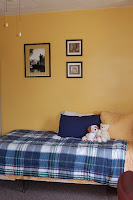Should I replace my regular light bulbs now or wait until they burn out?
This question has been plaguing me for some time. I have bought quite a few of the new compact fluorescent bulbs and have replaced burnt out regular bulbs as they go. Yet it just seems so wasteful to pull a perfectly good bulb and put in one of the new.
I know how good the new bulbs are. I've read several times the fact that :
- If every household in the U.S. replaced one light bulb with an ENERGY STAR qualified compact fluorescent light bulb (CFL), it would prevent enough pollution to equal removing one million cars from the road. Source: http://www.energystar.gov
I'm fully committed to the new lighting. I'm for it. I've also found other interesting information about how long to leave the lights on for. Did you know that if you have a bulb that you leave on a good amount of the time, this fluorescent is the best bet, but if you hardly use a bulb then a regular is probably fine?
The rule of thumb for optimizing the in-use versus turn-on power is:Knowing that this is the efficient road to travel and that I will save on my bills and the environment, I still can't shake the feeling that it's so very wasteful to throw away half-used bulbs. So, I'm going to start by only replacing those bulbs that get used the most. The lights that get left on for a longer period of time. Any thoughts from the interweb on this? Any advice that you think I should hear on this subject?
- Standard incandescent: turn off even if you leave the room for just seconds.
- Compact fluorescent: turn off if you leave the room for 3 minutes.
- Standard fluorescent: turn off if you leave the room for 15 minutes."
Source: http://www.treehugger.com/files/2005/06/user_tips_for_c.php
A couple final things about the compact fluorescent:
You should avoid contact with the tubes and always handle the bulb from the base only. If you can't avoid touching the tube, use soft gloves. Using gloves is not as critical as with halogen lamps where oils from your hands can dramatically reduce the life of the bulb (something to remember when changing the headlights of your car for example). With some fixtures it is difficult to avoid touching the tube when replacing the bulb, so I usually use gloves just in case. Even if you use gloves, you should still avoid contact with the tube because it is really quite fragile.
Source: http://www.easydonations.net/energyefficientlighting.htm







